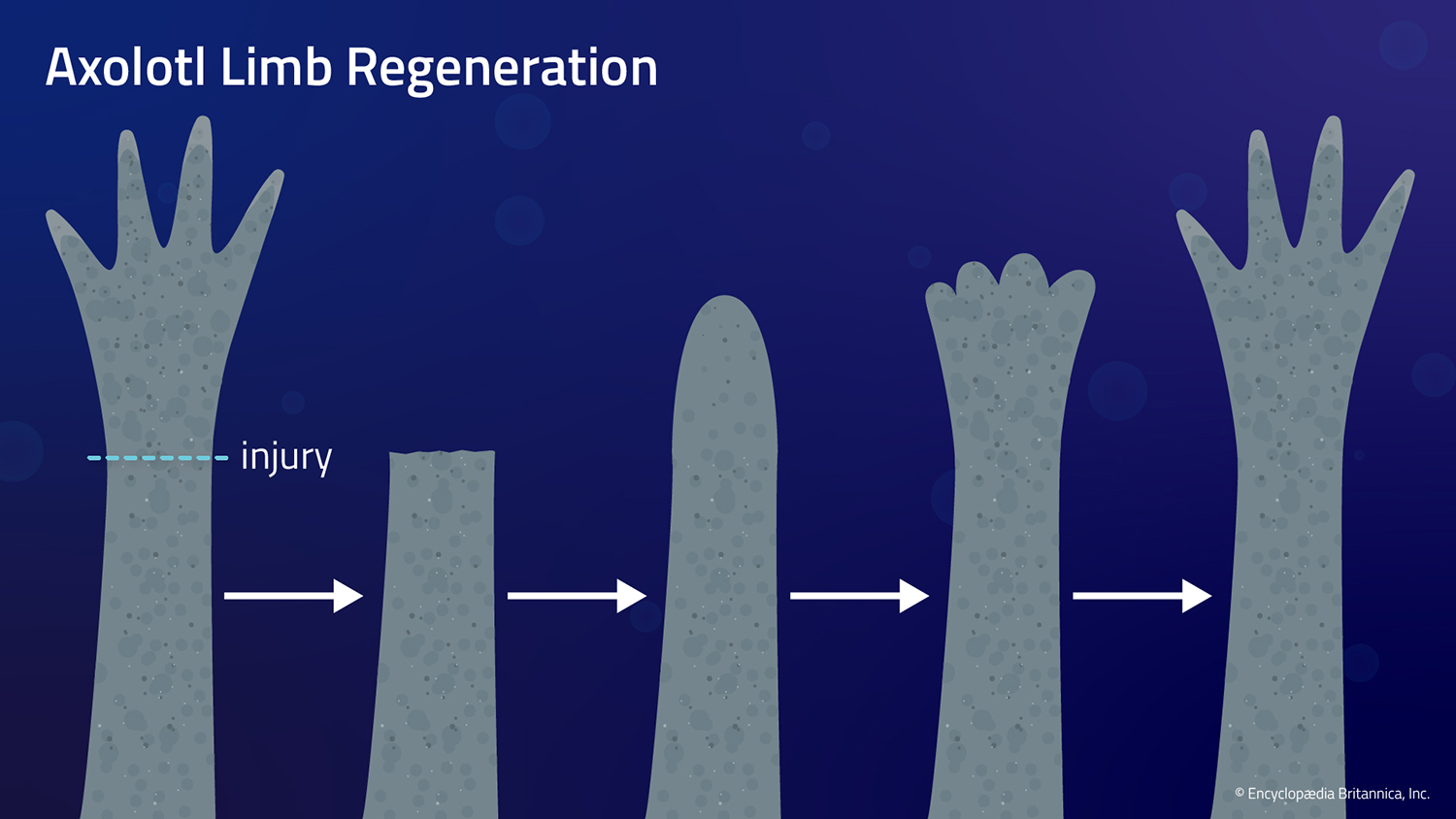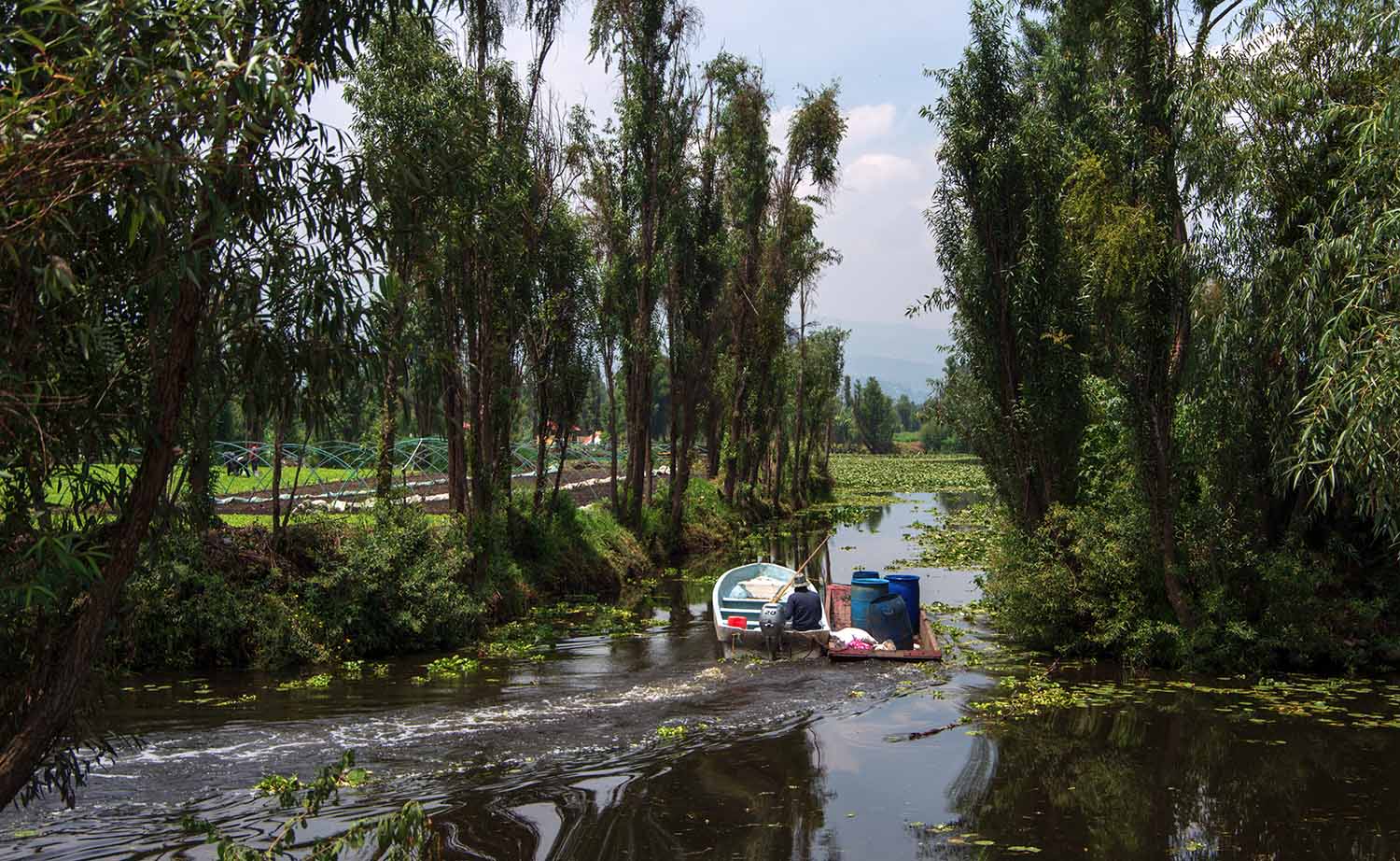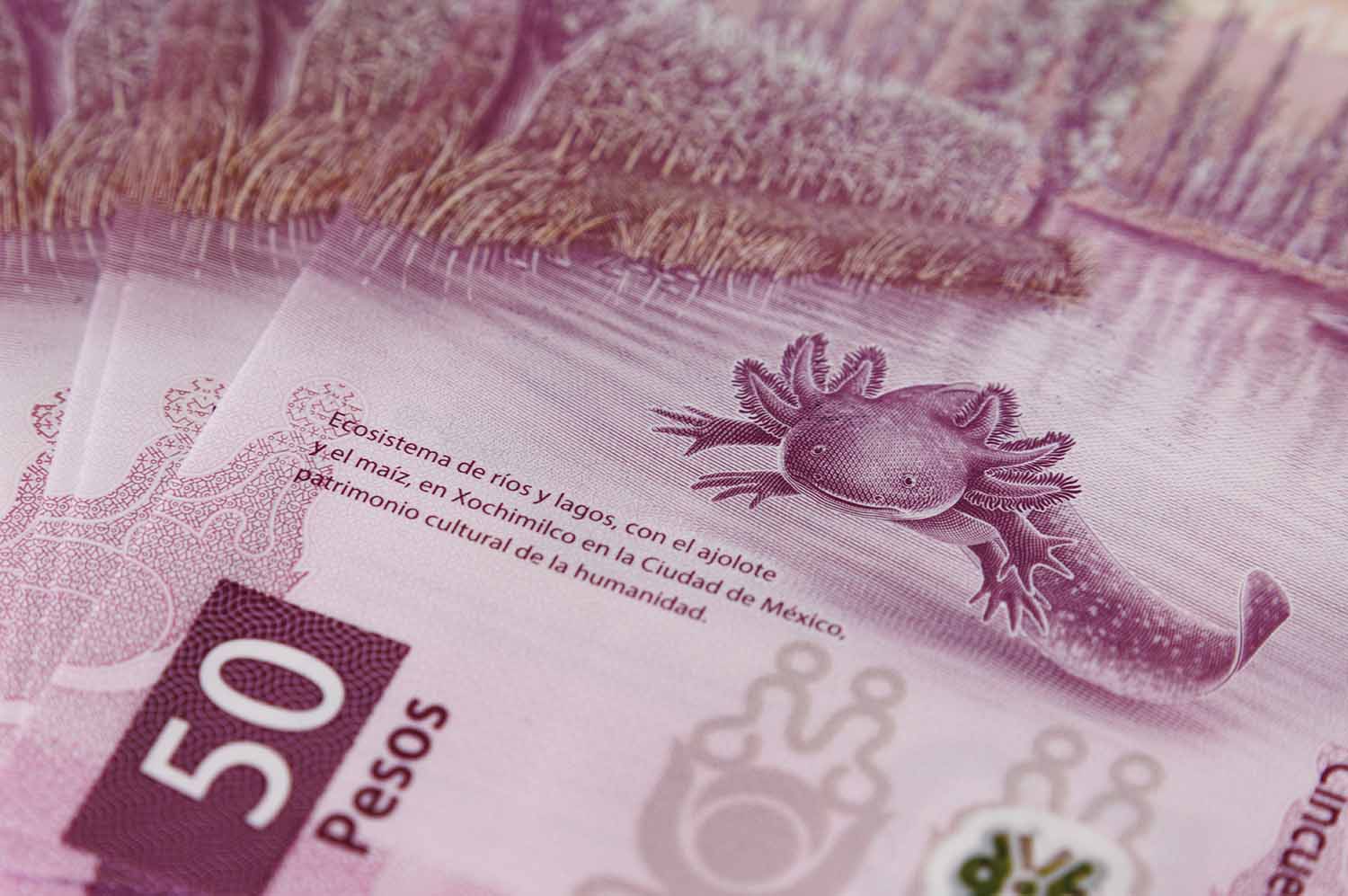Hope for the Axolotl
A captive breeding program could provide a boost for an endangered animal that’s like no other.
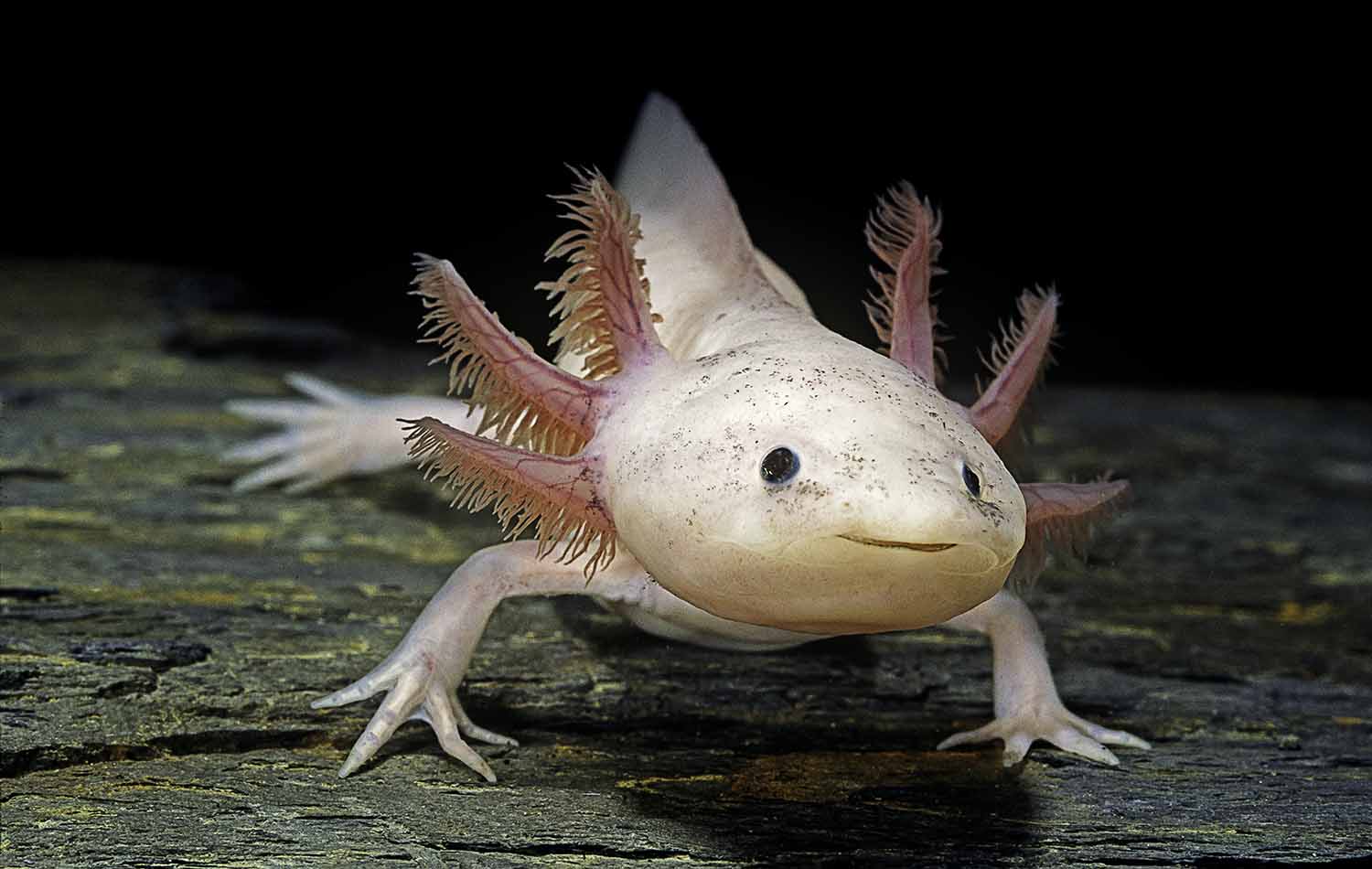
© Paul Starosta—Stone/Getty Images
This type of axolotl is white or pale pink because it does not have melanin pigmentation. Most wild axolotls are brownish.
Conservationists in Mexico are celebrating the early success of a program that may help save one of Earth’s rarest salamanders, the axolotl. The axolotl (ak-SUH-lah-tul) is a salamander with frilly gills and a mouth that appears to be smiling. This cute amphibian is considered critically endangered, and wildlife experts are racing to protect the wild population from extinction.
Axolotls once thrived in the abundant lakes and wetlands in the area that became Mexico City, Mexico. At that time, the area was the center of the powerful Aztec empire and the location of a body of water called Lake Texcoco. The Aztecs built a city in the middle of Lake Texcoco called Tenochtitlán. The people of this island city utilized and developed the natural waterways for transportation, food, and fishing. But after the Spanish took over Tenochtitlán in the 1500s, they drained the lake and, with it, much of the axolotl’s habitat. Urbanization of Mexico City and the surrounding area has further degraded the remaining wetlands.
Today, wild axolotls can be found only in the city’s Lake Xochimilco, where there may be as few as 50 to 1,000 individuals. Conservationists like Alejandra Ramos are hoping to save this rare animal from extinction with a captive breeding program that releases captive axolotls into the wild. Ramos leads a team of researchers who are breeding axolotls in captivity with the hopes of reviving the wild population.
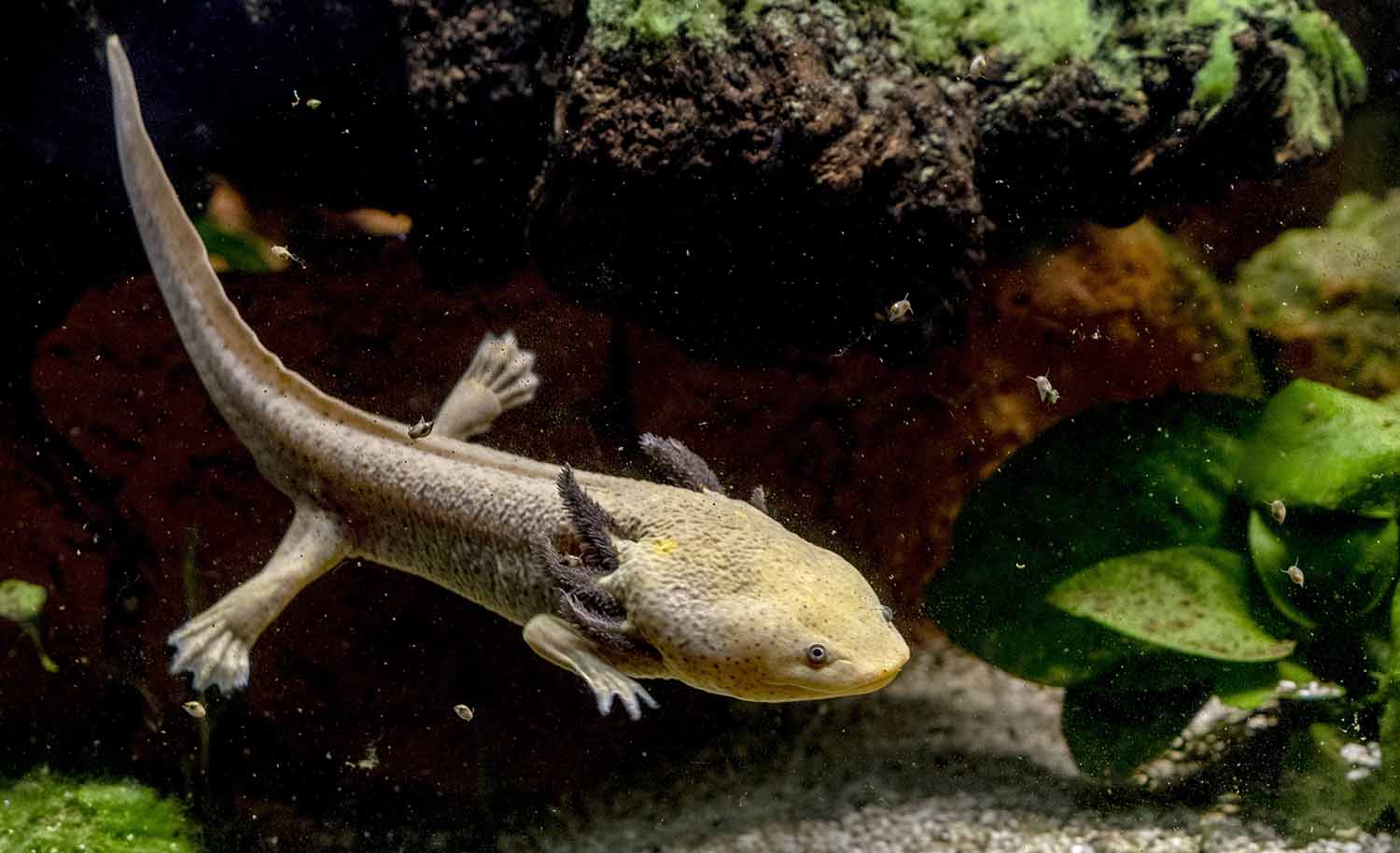
© izanbar—iStock/Getty Images
An axolotl swims in an aquarium.
In April of this year, Ramos published a research paper that indicates the captive breeding program has had a successful start. In 2017 and 2018, her team released 18 captive-bred axolotls into Mexico City wetlands—eight in a pond and 10 in a restored canal. Using tagging devices on the released animals, Ramos and her team tracked and observed the axolotls and found that all 18 individuals had survived, gaining weight and growing in their new habitats over the course of five weeks.
In other words, the axolotls appear to be thriving in the wild.
“If they had been skinny or ill, that would have been really, really bad for us,” said Ramos in an interview with Science News. “That captive-bred axolotls can actually survive in the wild … it’s really important for conservation.”
